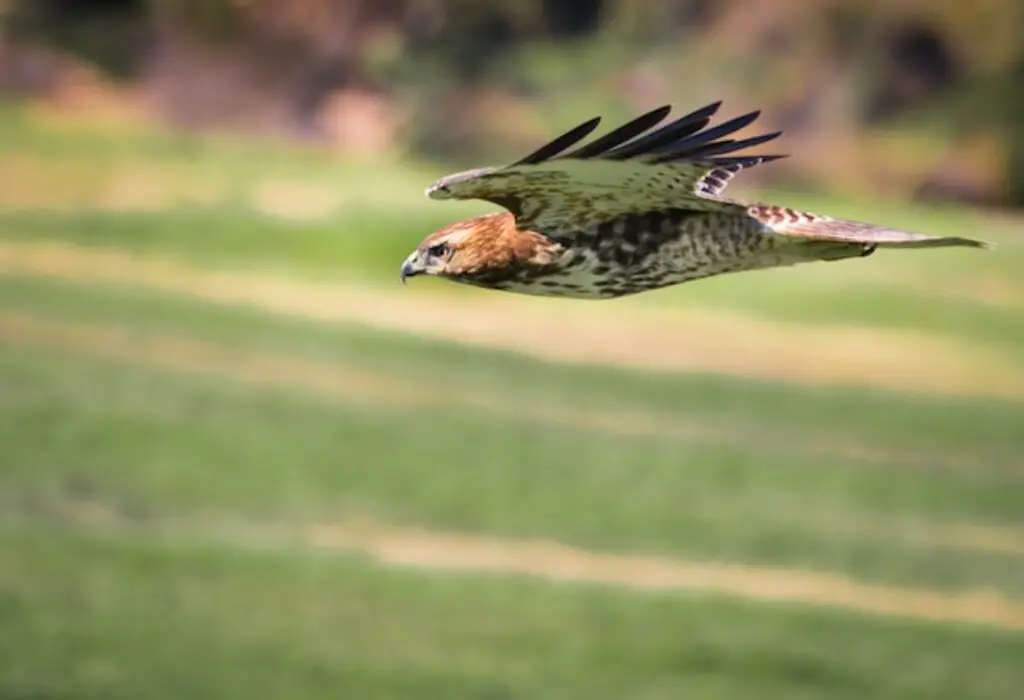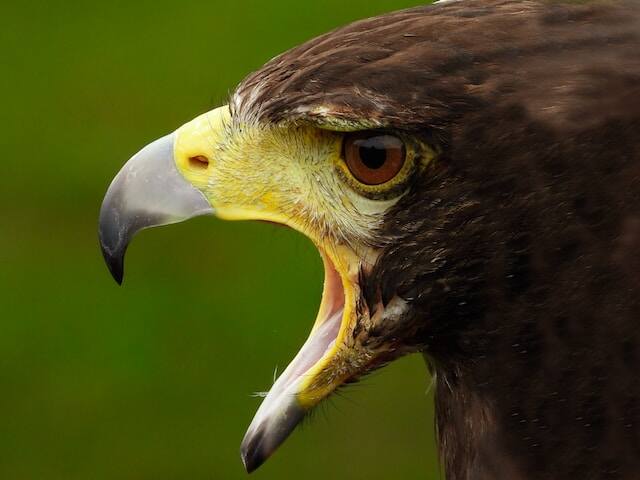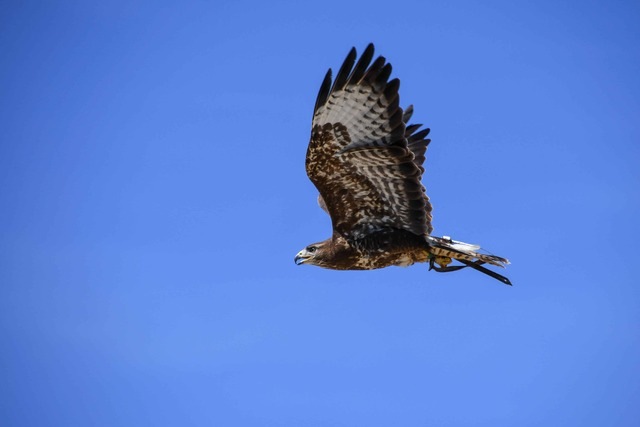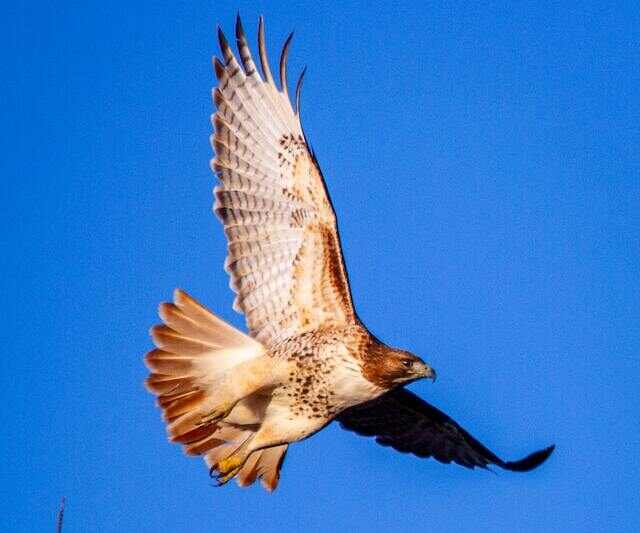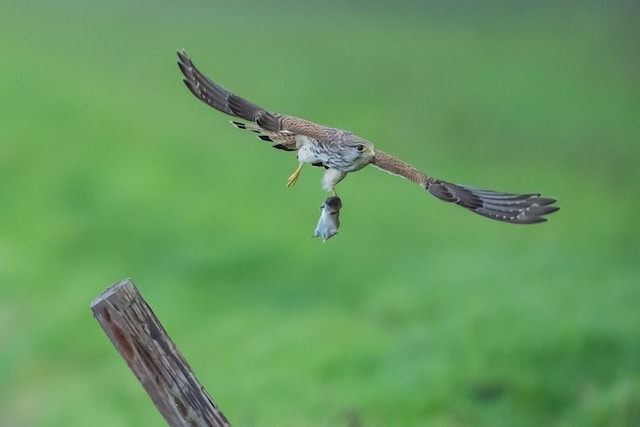Do Hawks Dive? Get ready to plunge into the fascinating world of these aerial acrobats! Hawks, known for their keen eyesight and impressive hunting abilities, have puzzled researchers with the question of whether they dive.
In this article, we’ll explore their hunting techniques, focusing on the thrilling art of diving. Discover how hawks adapt their strategies and uncover the secrets behind their incredible aerial maneuvers.
Brace yourself for an exhilarating dive into the realm of hawks!
Table of Contents
- 1 Key Takeaways
- 2 Do Hawks Dive?
- 3 Introduction to Hawks and Their Hunting Techniques
- 4 Understanding the Differences in Hawks’ Hunting Habits
- 5 Diving Techniques of Hawks
- 6 The Purpose of Diving
- 7 The Anatomy of Hawks and Its Role in Diving
- 8 Training and Practice of Diving
- 9 Prey Selection and Diving Strategies
- 10 Conservation and Protection of Hawks
- 11 Conclusion: The Fascinating World of Hawks and Their Diving Techniques
- 12 Frequently Asked Questions
- 12.1 How do hawks communicate with each other while hunting?
- 12.2 How do hawks’ diving techniques differ from those of other birds of prey?
- 12.3 What is the success rate of hawks’ dives when hunting?
- 12.4 Can hawks dive from any height or do they have limitations?
- 12.5 Are there any negative impacts of hawks’ diving behavior on their prey populations?
- 13 Author
Key Takeaways
- Diving is a crucial hunting technique for hawks, allowing them to rapidly descend upon their prey from above and increase their efficiency.
- Hawks have exceptional eyesight and are one of the fastest birds in the world, reaching speeds of up to 120 miles per hour during a dive.
- Prey selection is based on size and speed, with larger and slower animals being preferred targets, and hawks’ adaptability to changing conditions and ability to anticipate movements of their prey plays a crucial role.
- Conservation measures have been implemented to address threats faced by hawk populations, including habitat loss, climate change, and hunting, and efforts are crucial in ensuring that hawks remain a vital part of our ecosystem.
Do Hawks Dive?
Yes, hawks are known for their impressive diving abilities. When hunting, hawks will often soar high in the sky and then swiftly dive down to catch their prey. This tactic, known as stooping, allows them to use their speed and agility to surprise and capture their target with precision and efficiency.
Introduction to Hawks and Their Hunting Techniques
Hawks are predatory birds known for their exceptional hunting skills, which involve a range of techniques, including diving.
Their sharp eyesight is one of their most impressive features, allowing them to spot prey from great distances.
They use their keen vision to detect movement on the ground and in the air and can even see ultraviolet light.
Hawks’ hunting behavior is highly adaptable, and they use different techniques depending on the type of prey they are targeting.
Some species prefer to soar high in the sky before diving down to catch their prey with their sharp talons, while others prefer to hunt in more open spaces.
Understanding the differences in hawks’ hunting habits is crucial for anyone interested in observing these fascinating birds in the wild.
Understanding the Differences in Hawks’ Hunting Habits
Despite being known for their aerial acrobatics, these birds of prey have a diverse range of hunting methods that vary depending on the species and prey they target.
Some hawks, such as the Cooper’s hawk and the goshawk, prefer to hunt in dense forests where they can ambush their prey by swiftly darting through the trees.
Other species, like the red-tailed hawk, use their sharp eyesight to spot potential prey from high vantage points before swooping down to catch it.
Some hawks, like the peregrine falcon, are renowned for their diving styles, which involve plummeting through the air at breakneck speeds to catch their prey in mid-flight.
However, each species of hawk has its own unique hunting habits, and success rates can vary widely depending on factors such as the environment and the availability of prey.
In the next section, we will delve into the specific diving techniques of hawks and how they enable these birds of prey to catch their prey with incredible accuracy and precision.
Diving Techniques of Hawks
This subtopic delves into the diving techniques of hawks, with a focus on the Peregrine Falcon’s diving speed and the Sharp-shinned Hawk’s quick dives.
The Peregrine Falcon is renowned for its incredible diving speed, which can reach up to 240 miles per hour.
On the other hand, the Sharp-shinned Hawk is known for its quick and agile dives, which allow it to catch prey with great precision and accuracy.
Peregrine Falcon’s Diving Speed
The peregrine falcon’s ability to reach diving speeds of over 200 mph is a remarkable feat of avian engineering.
This record-breaking speed is achieved through a combination of physical adaptations, including streamlined bodies, powerful wings, and specialized respiratory systems.
Unlike other birds of prey, the peregrine falcon relies on its speed and agility to hunt, rather than brute strength.
Its hunting strategies involve diving from great heights to surprise its prey, often striking with incredible force and accuracy.
While the peregrine falcon’s diving speed is impressive, it is not the only bird of prey that utilizes this technique.
The sharp-shinned hawk, for example, is known for its quick dives and nimble movements, making it a formidable hunter in its own right.
Sharp-shinned Hawk’s Quick Dives
With remarkable speed and precision, the sharp-shinned hawk utilizes its nimble movements and quick dives to become a formidable hunter.
This bird of prey is known for its quick acceleration, which allows it to catch unsuspecting prey with ease. As it dives, the hawk relies on its keen eyesight and prey detection abilities to pinpoint its target.
Once it has zeroed in on its prey, the hawk tucks its wings in tightly and drops like a bullet towards the ground, reaching speeds of up to 40 miles per hour.
The sharp-shinned hawk’s quick dives are a testament to its hunting prowess and make it a fearsome predator in the skies.
The accompanying table below illustrates the sharp-shinned hawk’s quick acceleration and prey detection abilities, providing a visual representation of the bird’s hunting technique.
Moving forward, it is important to understand the purpose of diving for birds of prey and how it plays a critical role in their survival.
The Purpose of Diving
Diving is a crucial hunting technique utilized by many birds of prey, including hawks.
The purpose of diving is to increase the efficiency of hunting by allowing the predator to rapidly descend upon its prey from above.
This predatory advantage is achieved through the element of surprise and the ability to quickly close the distance between predator and prey.
Efficiency in Hunting
Efficiency in hunting is a crucial component of a hawk’s survival in the wild. Hawks have adapted to become skilled predators, using their sharp talons and keen eyesight to catch their prey with minimal effort.
Diving is one of the hunting techniques that hawks use to maximize their chances of catching prey efficiently.
By diving towards their prey, hawks are able to close the distance between themselves and their target, while also increasing their speed and accuracy.
This technique allows hawks to utilize their energy more effectively, giving them a greater predatory advantage over their prey.
The efficiency of diving is essential for hawks, as it allows them to conserve energy while still being successful in hunting.
Understanding the importance of efficiency in hunting is crucial in comprehending the unique adaptation and predatory advantage that hawks possess.
Predatory Advantage
The predatory advantage possessed by hawks is a remarkable adaptation that allows them to thrive in their environments.
Predator-prey dynamics have shaped the evolution of hawks’ hunting methods, leading to the development of various adaptations that give them an edge over their prey.
Hawks have sharp talons that can grasp and hold onto their prey, powerful wings that can provide lift and maneuverability, and keen eyesight that can detect prey from a distance.
These adaptations have allowed hawks to become highly efficient hunters, capable of diving at incredible speeds to catch their prey.
The ability to dive is a crucial aspect of their hunting strategy, as it allows them to surprise their prey and catch it off guard.
This predatory advantage has made hawks one of the most successful bird predators in the world. The anatomy of hawks and its role in diving will be discussed in the subsequent section.
The Anatomy of Hawks and Its Role in Diving
Remarkably intricate and specialized, the anatomy of hawks allows them to execute breathtaking aerial maneuvers with unparalleled precision.
Hawks have several adaptations in their anatomy that enable them to dive at high speeds and capture prey in mid-air.
Their wings are long and pointed, allowing for quick acceleration and sharp turns.
Additionally, hawks have strong chest muscles that enable them to flap their wings rapidly and maintain high speeds during dives.
Their eyesight is also exceptional, with the ability to perceive details from great distances.
However, the physiological limitations of hawks require them to rely on momentum and gravity to achieve their diving speed.
Furthermore, their talons and beaks are designed to effectively capture and kill prey during dives.
Overall, the specialized anatomy of hawks allows them to perform remarkable aerial feats and effectively capture prey in mid-air, making them formidable predators.
Moving on to the subsequent section about the training and practice of diving…
Training and Practice of Diving
To hone their diving skills, hawks engage in extensive training and practice, perfecting their ability to capture prey mid-air through repeated attempts and trial-and-error.
This training involves a range of techniques, from practicing low dives to using mock prey in controlled environments.
Hawks also take safety precautions, such as ensuring they have enough altitude before diving and avoiding potential obstacles in their path.
Through this training, hawks become adept at selecting the right prey and the right diving strategies for each situation.
They learn to adapt to changing conditions, such as wind direction and speed, and to anticipate the movements of their prey.
With their skills finely honed, hawks are able to capture prey with ease, making them one of the most impressive and efficient predators in the animal kingdom.
As we move on to the next section on prey selection and diving strategies, we will see how these training techniques and safety precautions come into play in the wild.
Prey Selection and Diving Strategies
In the pursuit of prey, diving birds select their targets based on size and speed. Larger and slower prey are easier to catch, while smaller and faster prey require a more strategic approach.
Different diving strategies are employed for different prey, with birds adjusting their diving speed, angle, and depth based on the behavior and characteristics of their target.
Understanding these factors can provide insight into the sophisticated hunting techniques of diving birds.
Prey Selection Based on Size and Speed
Prey selection by hawks is based on the size and speed of their potential prey, with larger and slower animals being preferred targets.
Hawks have evolved to be efficient predators, and their size and strength allow them to take down prey that is much larger than themselves.
When selecting prey, hawks consider both the size and speed of their target. Larger prey provides more food and energy, while slower prey is easier to catch and requires less energy to capture.
In addition, hawks may also consider the behavior of their prey, such as whether it is solitary or part of a group.
Solitary prey may be easier to catch, while group hunting may require more complex diving strategies.
Overall, hawks have developed a keen sense of prey selection, enabling them to be successful hunters in a variety of environments.
In the next section, we will explore the different diving strategies that hawks use when hunting different types of prey.
Diving Strategies for Different Prey
Different types of prey require specific diving strategies for hawks to effectively capture their meal. For instance, hawks have been observed using different techniques when hunting small prey like rodents or larger prey like rabbits.
When going after small prey, hawks will typically hover over the area and then quickly dive down to catch their prey.
In contrast, when hunting larger prey, hawks will often swoop down from a higher altitude and use their momentum to knock the prey off balance, making it easier to catch.
The diving strategy also depends on the behavior of the prey and environmental factors such as wind speed and direction.
Therefore, understanding the specific diving strategies employed by hawks can be crucial in developing conservation and protection measures for these birds of prey.
Conservation and Protection of Hawks
The conservation and protection of hawks is a critical issue due to the threats they face in their natural habitats. These threats include habitat loss, climate change, and hunting.
Conservation efforts and protection measures have been implemented to address these threats and ensure the survival of hawk populations.
These efforts include habitat restoration, the establishment of protected areas, and education campaigns to raise awareness about the importance of hawks in the ecosystem.
Threats to Hawk Populations
Endangered hawk populations are facing a range of threats that include human intervention, habitat destruction, illegal hunting, and environmental pollution.
Human activities such as logging, mining, and land development have led to the destruction of natural habitats, forcing hawks to migrate and adapt to new environments.
Illegal hunting and trapping for sport or commercial purposes have also contributed to the decline of hawk populations.
Environmental pollution, including pesticide use and water contamination, has led to the loss of prey and the weakening of hawk immune systems.
To convey a deeper meaning for the audience, a 2 column and 4 row table in markdown format can be incorporated to show the different types of threats and their impact on hawk populations.
Despite these challenges, conservation efforts and protection measures are being implemented to ensure the survival of hawk populations.
Conservation Efforts and Protection Measures
Conservation organizations have implemented various measures to safeguard the habitats and wellbeing of hawk populations.
These efforts include protection measures such as prohibiting the use of certain pesticides that are toxic to hawks, restoring and preserving their natural habitats, and monitoring populations to ensure their numbers are stable.
In addition, educational campaigns have been developed to educate the public about the importance of hawks in the ecosystem and how they can contribute to their conservation.
Furthermore, some organizations have implemented programs to release captive-bred hawks into the wild to increase their populations.
These efforts have been successful in supporting hawk populations and ensuring their continued existence.
As a result, hawks are now thriving in many regions, and their populations are steadily increasing.
These conservation efforts are crucial in ensuring that hawks remain a vital part of our ecosystem and continue to inspire awe with their diving techniques.
Conclusion: The Fascinating World of Hawks and Their Diving Techniques
Hawks are some of the most fascinating birds in the animal kingdom, with their unique hunting techniques that have evolved over millions of years.
From soaring high above the earth to diving at lightning speeds, these birds of prey have mastered the art of hunting.
In this article, we have explored the various diving techniques of hawks and the purpose behind them.
Hawks dive at incredible speeds, reaching up to 240 mph, and their anatomy plays a crucial role in this hunting technique.
Their streamlined bodies, sharp talons, and keen eyesight help them to accurately pinpoint their prey and execute their dive.
The training and practice of diving are also essential for hawks to become proficient hunters. Prey selection and diving strategies are another critical aspect of hawks’ hunting techniques.
These birds are highly adaptable and use various strategies to catch their prey, depending on the environment and the size of the prey.
Conserving and protecting hawks is necessary to ensure their survival, and it is essential to understand their hunting techniques to achieve this goal.
In conclusion, hawks are magnificent creatures that have evolved over millions of years to become the ultimate hunters.
Their diving techniques are just one aspect of their hunting skills, but it is undoubtedly one of the most impressive.
By understanding the diving techniques of hawks, we can gain a deeper appreciation for these birds and their place in the natural world.
It is up to us to protect and conserve these majestic creatures for future generations to enjoy.
Frequently Asked Questions
How do hawks communicate with each other while hunting?
Hawks employ various hunting strategies, including vocalizations to communicate with each other while hunting. These vocalizations aid in coordinating attacks and locating prey. Such communication is crucial for the success of their hunting missions.
How do hawks’ diving techniques differ from those of other birds of prey?
While it may seem obvious that hawks dive, their technique differs from other birds of prey. Comparing techniques, hawks prioritize accuracy over speed, while falcons and eagles prioritize speed. Understanding the adaptations and physiology behind their successful dives is key to appreciating their hunting prowess.
What is the success rate of hawks’ dives when hunting?
The success rate of hawks’ hunting techniques varies depending on the type of prey they are targeting, but studies have shown success rates ranging from 20-60%. Hawks use a combination of speed, agility, and precision to catch their prey, making them efficient hunters.
Can hawks dive from any height or do they have limitations?
Hawks are capable of diving from high altitudes, but there are limitations based on prey size and the bird’s physical abilities. The height from which they can dive varies between species and individuals.
Are there any negative impacts of hawks’ diving behavior on their prey populations?
Hawks’ diving behavior can have a significant ecological impact on prey populations. The force of impact alone can kill prey, and repeated attacks can reduce prey numbers. This can have cascading effects on the ecosystem.

